

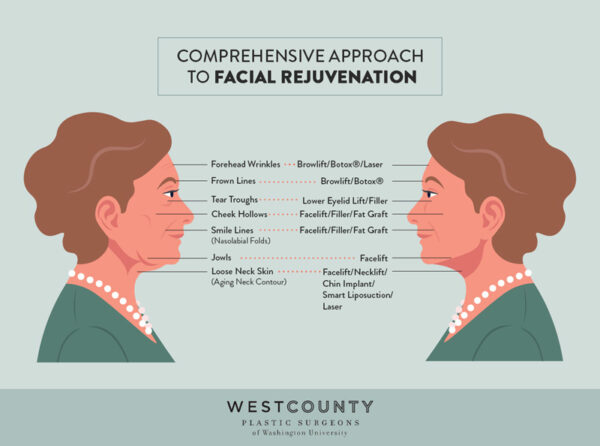
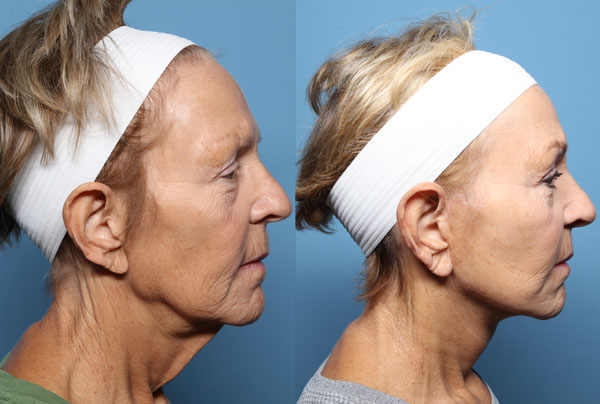
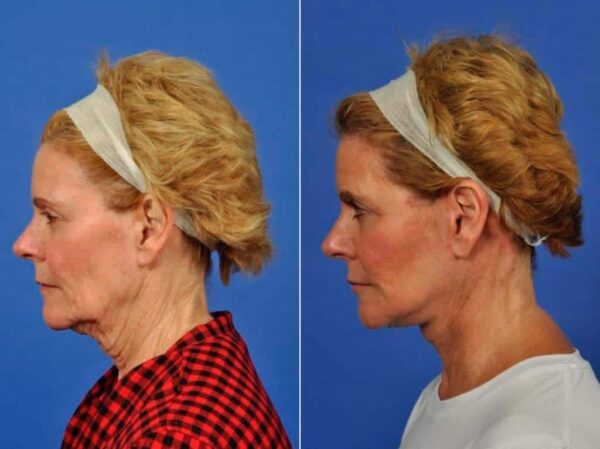



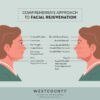
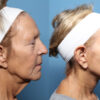



Free
Embark on a transformative journey with our exceptional range of medical treatments. As a leading medical tour operator, we offer a comprehensive selection of world-class treatments and procedures to address your unique healthcare needs. From advanced surgeries to cutting-edge therapies, our team of experienced professionals is dedicated to providing top-notch care and ensuring your comfort and satisfaction. Discover a new level of healthcare excellence with our tailored treatment options. Book now to start your journey towards a healthier and happier you.
A traditional facelift, also known as a rhytidectomy, is a surgical procedure aimed at improving visible signs of aging in the face and neck. Here is a general explanation of the procedure based on the search results:
Anesthesia: The procedure begins with the administration of anesthesia to ensure your comfort during the surgery. The options include intravenous sedation or general anesthesia, and your surgeon will recommend the best choice for you.
Incision: The incision pattern for a traditional facelift may vary depending on the desired outcome and the surgeon’s technique. Typically, the incision starts in the hairline at the temples, continues around the ear, and may extend into the hair-bearing scalp behind the ear. The size and placement of the incisions will be discussed with you before the surgery.
Tissue Repositioning: After making the incisions, the surgeon will lift and reposition the underlying tissues, including the muscles and fat, to address sagging and restore a more youthful contour to the face. This step involves tightening the underlying structures and removing excess fat if necessary.
Skin Redraping: Once the underlying tissues are repositioned, the surgeon will redrape the skin over the newly contoured facial structures. Excess skin may be trimmed or removed to achieve a smoother and more youthful appearance.
Closure: The incisions are then closed with sutures or other closure techniques. Your surgeon may use techniques to minimize visible scarring, such as placing the incisions in natural creases or using dissolvable sutures.
Based on the search results, a traditional facelift is generally considered suitable for the following individuals:
Significant Signs of Aging: Traditional facelifts are often recommended for individuals who have significant signs of aging, such as sagging skin, deep wrinkles, and jowls. This procedure can address multiple areas of the face and neck to provide a more comprehensive rejuvenation.
Good Skin Elasticity: Candidates for a traditional facelift typically have good skin elasticity, which allows for optimal results. This means that the skin has some degree of firmness and can adapt well to the repositioning and tightening performed during the surgery.
Realistic Expectations: It is important to have realistic expectations about the outcomes of a traditional facelift. While the procedure can provide significant improvements, it may not completely eliminate all signs of aging or drastically change your appearance. Discussing your goals and expectations with a qualified plastic surgeon is crucial to ensure that a traditional facelift is the right choice for you.
Good Overall Health: Candidates for a traditional facelift should be in good overall health and free from any medical conditions that may increase the risks associated with surgery. A thorough medical evaluation will be conducted to assess your suitability for the procedure.
Age Range: While there is no specific age limit for a traditional facelift, it is commonly performed on individuals in their 40s to 60s. However, age alone is not the sole determining factor, and suitability for the procedure is assessed on an individual basis.
Based on the search results, a traditional facelift may not be suitable for the following individuals:
Minimal Signs of Aging: If you have minimal signs of aging, such as fine lines or shallow wrinkles, a traditional facelift may not be necessary. Less invasive procedures, such as non-surgical treatments like fillers or injectables, may be more appropriate for addressing these early signs of aging.
Poor Skin Elasticity: Candidates for a traditional facelift typically have good skin elasticity, which allows for optimal results. If you have poor skin elasticity, such as very loose or thin skin, a traditional facelift may not provide the desired outcome. Your plastic surgeon can assess your skin quality and recommend alternative procedures that may be more suitable for you.
Medical Conditions and Health Concerns: Certain medical conditions or health concerns may make a traditional facelift unsuitable. It is important to discuss your medical history with your plastic surgeon to determine if you are a suitable candidate for the procedure. Your surgeon will consider factors such as your overall health, any underlying medical conditions, and any medications you are taking.
Desire for Less Invasive Options: If you prefer less invasive procedures or are not ready for surgery, there are alternative options available. Non-surgical treatments, such as dermal fillers, Botox, or thread lifts, may be suitable for addressing specific concerns without the need for a traditional facelift.
The advantages of a traditional facelift, based on the search results, include:
Comprehensive Facial Rejuvenation: A traditional facelift can address multiple areas of the face and neck, providing a more comprehensive rejuvenation compared to less invasive procedures. It can effectively address sagging skin, deep wrinkles, jowls, and excess fat in the mid to lower face.
Long-Lasting Results: A traditional facelift is a surgical procedure that involves repositioning and tightening the underlying tissues and muscles. This can result in longer-lasting results compared to non-surgical treatments, which may require more frequent maintenance sessions.
Improved Facial Contours: By lifting and repositioning the underlying tissues, a traditional facelift can restore a more youthful and refreshed appearance to the face. It can help improve facial contours, including the cheeks, jawline, and neck, providing a more defined and balanced facial profile.
Customizable Approach: A traditional facelift can be tailored to address specific concerns and meet individual goals. The procedure can be customized based on factors such as the patient’s anatomy, desired outcomes, and the surgeon’s expertise, ensuring a personalized approach to facial rejuvenation.
Durable and Dramatic Results: The surgical nature of a traditional facelift allows for more significant changes in the appearance of the face. It can provide a more dramatic transformation compared to non-surgical options, making it suitable for individuals who desire a more noticeable improvement in their facial appearance.
Complications associated with a traditional facelift, as mentioned in the search results, may include:
Hematoma: Hematoma, which is the collection of blood under the skin, is one of the most common complications following a facelift. It can occur in approximately 1-5% of procedures. Prompt attention and management by the surgeon are necessary to address this complication 1.
Infection: Infections can occur after a facelift, although they are relatively rare. Proper surgical techniques, sterile conditions, and postoperative care can help minimize the risk of infection.
Skin Loss: In rare cases, a facelift can interrupt the blood supply to facial tissues, leading to skin loss. This complication is treated with medications and appropriate wound care. Procedures to reduce scarring may be necessary 2.
Hair Loss: Temporary or permanent hair loss near the incision sites can occur after a facelift. Permanent hair loss can be addressed with surgical procedures, such as hair follicle transplantation 2.
Complications from Anesthesia: As with any surgical procedure, there is a risk of complications related to anesthesia. These can include allergic reactions, grogginess, nausea, or a sore throat. However, these complications are generally rare.
Risk Factors: Certain medical conditions or lifestyle habits can increase the risk of complications associated with a facelift. Factors such as smoking, existing health conditions, and poor overall health may affect the healing process and increase the risk of complications.
Based on the search results, here are some preoperative care instructions that may be recommended for a traditional facelift:
Hair Care: It is advised to wash your hair either the evening before or the morning of the surgery. Avoid using any styling products or sprays on the day of the procedure 1.
Clothing: Wear loose-fitting clothes that fasten in the front or back to ensure comfort and ease of dressing after the surgery. Avoid slipover clothing 1.
Jewelry and Makeup: Leave all valuables, including jewelry, at home. Avoid wearing any facial or eye makeup on the day of the surgery. It is also recommended to avoid nail polish.
Eyewear: You may wear glasses, but contact lenses should be avoided on the day of the surgery 1.
Dentures: If you wear dentures, it is generally advised to keep them in during the surgery 1.
Preparation at Home: To ensure a smooth recovery process, it is recommended to prepare your space ahead of time. This may include meal prepping or purchasing pre-made meals, arranging for someone to take care of other responsibilities such as pet care, having prescription medications nearby, and ensuring that the space you will be staying in is quiet and comfortable 2.
The postoperative care for a traditional facelift typically involves the following:
Incision Care: It is important to follow your surgeon’s instructions for incision care to prevent infection and promote proper healing. This may include keeping the incisions clean, applying antibiotic ointment, and changing dressings as directed.
Pain Management: Some pain and discomfort are expected after a facelift. Your surgeon may prescribe pain medication or recommend over-the-counter pain relievers to manage any discomfort. Follow your surgeon’s instructions regarding pain management.
Swelling and Bruising: Swelling and bruising are common after a facelift. Applying cold compresses or ice packs to the treated areas can help reduce swelling. Your surgeon may also recommend keeping your head elevated while resting to minimize swelling.
Activity Restrictions: It is important to avoid strenuous activities, heavy lifting, and bending over for a certain period of time after the surgery. Your surgeon will provide specific guidelines on when you can gradually resume normal activities and exercise.
Medications: Your surgeon may prescribe antibiotics to prevent infection and may also recommend medications to manage swelling or promote healing. Follow your surgeon’s instructions regarding medication usage.
Follow-up Appointments: Your surgeon will schedule follow-up appointments to monitor your progress and remove any stitches or drains. Attend these appointments as scheduled and communicate any concerns or questions you may have.
Skin Care: Your surgeon may provide specific instructions on how to care for your skin after a facelift. This may include gentle cleansing, avoiding excessive sun exposure, and using recommended skincare products.
Only logged in customers who have purchased this product may leave a review.
The limited incision facelift, also known as a mini facelift, is a modern and less invasive procedure that focuses on rejuvenating the lower section of the face. Here is an explanation of the procedure based on the search results:
Procedure Overview: The limited incision facelift aims to lift and beautify the lower face, including the cheeks and jawline. It is performed as an alternative to the traditional facelift for patients with mild to moderate signs of aging.
Incisions: The incisions made during a limited incision facelift are shorter and well-concealed. They typically begin in the hairline just above the ear and wrap around the front of the ear, but they do not extend all the way into the lower scalp like a traditional facelift incision.
Tissue Lifting and Tightening: After making the incisions, the surgeon lifts and repositions the underlying facial tissues, including the muscles and fat pads. This helps to restore a more youthful contour to the face and improve the appearance of sagging skin.
Excess Skin Removal: Excess skin is carefully trimmed away, and the remaining skin is redraped over the newly repositioned contours of the face. The incisions are then closed with sutures or other closure techniques.
Benefits: The limited incision facelift offers several benefits, including a shorter recovery period and limited scarring compared to traditional facelift procedures. It can provide significant rejuvenation to the lower face while maintaining a natural appearance.
Customization: Like other facelift procedures, the limited incision facelift can be customized to address specific concerns and desired outcomes. Surgeons personalize the procedure based on the individual’s unique needs and goals.
Anesthesia: The limited incision facelift is typically performed under local anesthesia with sedation. This helps ensure patient comfort during the procedure.
The limited incision facelift, also known as a mini facelift, is suitable for individuals with mild to moderate signs of aging. Here are some factors to consider based on the search results:
Mild to Moderate Signs of Aging: The limited incision facelift is ideal for individuals with less severe sagging and wrinkles. It is a suitable option for those who want to address early signs of aging and achieve a more youthful appearance.
Desired Outcome: If you prefer a more subtle improvement rather than a dramatic transformation, the limited incision facelift may be a suitable choice. It provides a more natural-looking result compared to more extensive facelift procedures.
Skin Laxity: The severity of sagging and skin laxity plays a role in determining the appropriate facelift technique. The limited incision facelift is typically recommended for patients with mild to moderate skin laxity. Individuals with significant lower neck skin laxity may not be ideal candidates for this procedure.
Scarring Concerns: The limited incision facelift offers the advantage of smaller, well-concealed incisions. This makes it particularly appealing for individuals concerned about visible scarring. The incisions are typically shorter and placed in inconspicuous areas, resulting in less visible scarring compared to traditional facelift procedures.
Recovery Time: The limited incision facelift generally involves a shorter recovery period compared to more extensive facelift procedures. This can be advantageous for individuals who want to minimize downtime and return to their regular activities sooner.
The limited incision facelift, also known as a mini facelift, is not suitable for individuals with significant lower neck skin laxity. According to the search results, this procedure is typically recommended for patients with mild to moderate signs of aging. It focuses on rejuvenating the lower face, including the cheeks and jawline, rather than addressing neck sagging or excess skin.
Based on the search results, here are some advantages of the limited incision facelift:
Limited Incision and Scar: The limited incision facelift involves smaller incisions compared to traditional facelift procedures. This results in smaller, well-concealed scars, which can be appealing for individuals concerned about visible scarring.
Excellent Correction: The limited incision facelift can provide excellent correction of various signs of aging, including nasolabial folds, cheek laxity, jowls, and redundant submental skin and fat 1. It focuses on rejuvenating the lower face, including the cheeks and jawline, and can help restore a more youthful appearance.
Minimal Recovery Time: One of the advantages of the limited incision facelift is that it involves a shorter recovery period compared to more extensive facelift procedures. Patients can typically resume their daily activities within a few days after the surgery 2.
Customization: The limited incision facelift can be customized to address specific concerns and desired outcomes. Surgeons can personalize the procedure to give the face a more refreshed and youthful appearance while accentuating the individual’s natural beauty 2.
Local Anesthesia: The limited incision facelift usually requires local anesthesia only, meaning the patient stays conscious throughout the surgery and does not feel any pain. This can be advantageous, as it avoids the grogginess or disorientation associated with general anesthesia 2.
Based on the search results, here are some potential complications associated with the limited incision facelift:
Hair Loss: Temporary or permanent hair loss near the incision sites can occur. In cases of permanent hair loss, surgical procedures may be necessary to transplant skin with hair follicles 1.
Skin Loss: In rare cases, a limited incision facelift can interrupt the blood supply to facial tissues, resulting in skin loss. This complication is treated with medications and appropriate wound care. If necessary, additional procedures can be performed to reduce scarring 1.
Bleeding and Infection: Like any major surgery, a limited incision facelift carries a risk of bleeding and infection. It’s important to follow post-operative care instructions and take prescribed medications to minimize these risks.
Reaction to Anesthesia: There is a risk of having a reaction to the anesthesia used during the limited incision facelift. Your surgeon will evaluate your medical history and take necessary precautions to minimize this risk 1.
Complications from Hematoma: In some cases, hematomas (collections of blood) may occur after the limited incision facelift. Surgical drainage may be required to address this complication.
Preoperative care for a limited incision facelift involves several important steps to ensure a successful surgery and smooth recovery. Here are some key aspects of preoperative care based on the search results:
Medical Evaluation: Before undergoing a limited incision facelift, a thorough preoperative medical evaluation is typically conducted. This evaluation helps assess your overall health and identify any potential risks or contraindications for the surgery. It may involve reviewing your medical history, performing physical examinations, and conducting any necessary laboratory tests.
Discussion with Surgeon: It’s important to have a detailed consultation with your plastic surgeon before the procedure. During this consultation, you can discuss your goals, expectations, and any concerns you may have. Your surgeon will evaluate your facial anatomy, skin condition, and determine if you are a suitable candidate for a limited incision facelift.
Preoperative Instructions: Your surgeon will provide you with specific preoperative instructions to follow. These instructions may include guidelines on medications to avoid before surgery, such as blood-thinning medications or herbal supplements that can increase the risk of bleeding. It’s crucial to follow these instructions carefully to minimize any potential complications.
Smoking Cessation: If you are a smoker, it is highly recommended to quit smoking before the surgery. Smoking can impair the healing process and increase the risk of complications. Your surgeon may advise you to stop smoking for a certain period before and after the procedure.
Medications: Your surgeon may prescribe preoperative medications, such as antibiotics and corticosteroids, to reduce the risk of infection and inflammation. It’s important to take these medications as directed and inform your surgeon about any allergies or adverse reactions you may have.
Hair Preparation: Depending on the incision placement, you may be instructed to pull your hair back and secure it away from the surgical area. This helps ensure a clean surgical field and facilitates the incision process.
Preoperative Photographs: Preoperative photographs are often taken to document your facial appearance before the surgery. These photographs serve as a reference for your surgeon during the procedure and can help track your progress during the recovery period.
Support System: It’s essential to arrange for a support system to assist you during the initial recovery phase. This may involve having someone accompany you to the surgery, driving you home afterward, and providing assistance with daily activities during the early stages of recovery.
Postoperative care is crucial for a successful recovery after a limited incision facelift. Here are some key aspects of postoperative care based on the search results:
Follow Surgeon’s Instructions: Your surgeon will provide you with specific postoperative instructions tailored to your individual case. It’s important to follow these instructions carefully to ensure proper healing and minimize the risk of complications. These instructions may include guidelines on wound care, medication usage, activity restrictions, and follow-up appointments.
Physical Rest and Activity: It’s essential to limit physical exertion for at least one week after the surgery. Gradually resume normal activities as advised by your surgeon. Avoid strenuous exercise and heavy lifting for a few weeks to allow your body to heal properly.
Incision Care: Proper care of the incision sites is crucial for optimal healing and to minimize the risk of infection. Follow your surgeon’s instructions on how to clean and care for the incisions. Keep the incision areas clean and dry, and avoid applying any creams, ointments, or makeup until instructed by your surgeon.
Monitoring for Infection: Monitor the incision sites for any signs of infection, such as spreading redness, swelling, pus or drainage, excessive pain, increasing warmth, or a fever of 101 degrees Fahrenheit or greater. If you notice any concerning symptoms, contact your surgeon immediately.
Swelling and Bruising: Swelling and bruising are common after a facelift. Apply cold compresses as directed by your surgeon to help reduce swelling and minimize bruising. Keep your head elevated while resting or sleeping to further reduce swelling.
Pain Management: Your surgeon may prescribe pain medication to manage any discomfort or pain during the initial recovery period. Take the medication as directed and inform your surgeon if you experience any severe or persistent pain.
Follow-Up Appointments: Attend all scheduled follow-up appointments with your surgeon. These appointments are essential for your surgeon to monitor your healing progress, remove any stitches or dressings, and address any concerns or questions you may have.
Sun Protection: Protect your skin from sun exposure by wearing a wide-brimmed hat and using sunscreen with a high SPF. Sun exposure can increase the risk of complications and delay the healing process.
There are no reviews yet.
Only logged in customers who have purchased this product may leave a review.
Choosing the right hospital and physician are important factors to consider that significantly influence a patient’s treatment. The preferred choice for many patients is choosing private care.
Choosing the right hospital and physician are important factors to consider that significantly influence a patient’s treatment.
Reviews
There are no reviews yet.